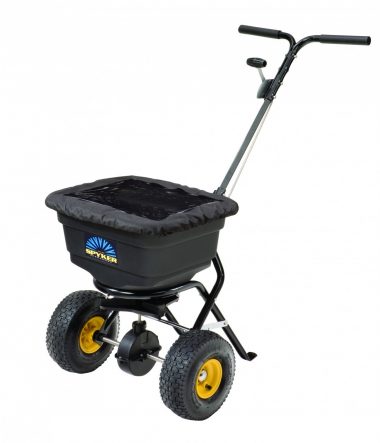
Broadcaster spreaders and drop spreaders share many features in common. At the heart of both is a hopper with adjustable holes in the bottom. A gauge or lever allows you to accurately set the size of these holes (following the recommended setting listed on many bags of lawn products), allowing the proper volume of material to uniformly exit the hopper. But the two machines have their differences, too.
Drop spreaders lay a trail of material the width of their hopper. They work best on small lawns and in yards with numerous flowerbeds, sidewalks or patios where you need to carefully control the spread pattern. Just be careful to line up your adjacent passes, so the payload isn’t laid too thick or miss portions of the lawn. There are also certain types of spreads that work better out or only work out of a drop spreader, such as lime.
Broadcast spreaders are the choice of the many pros. Broadcasters work best for larger yard and areas where precise control is not needed. They deliver their payload more quickly over a wider area. One of their wheels is geared so that as the spreader moves, the drive wheel turns a whirling impeller plate under the hopper that catches and throws the payload. When the shutoff plate is open, the impeller broadcasts the material in a 180-degree arc.

